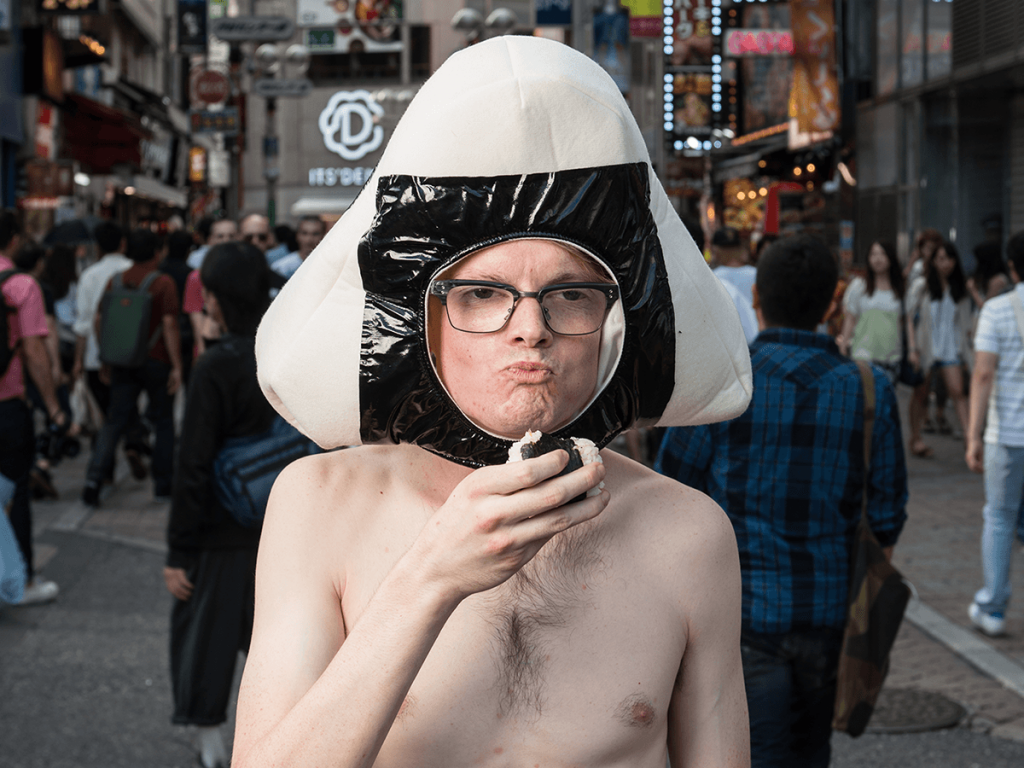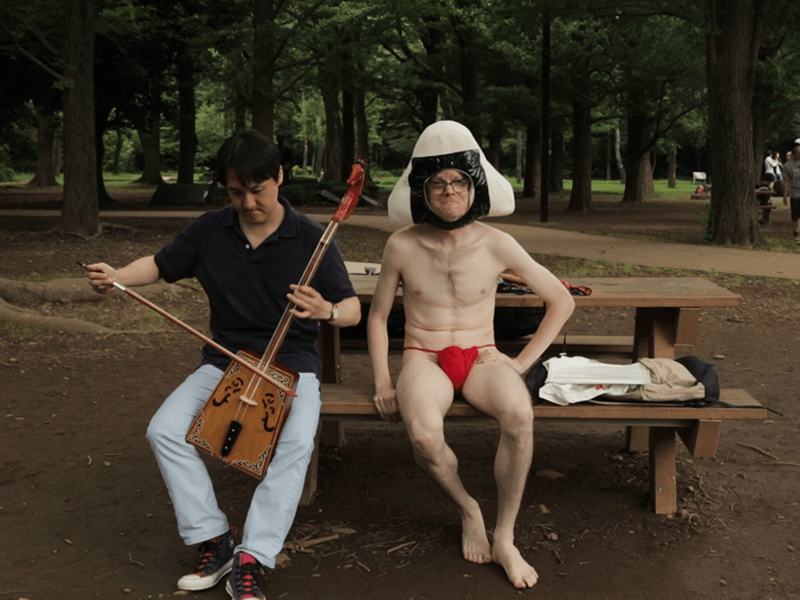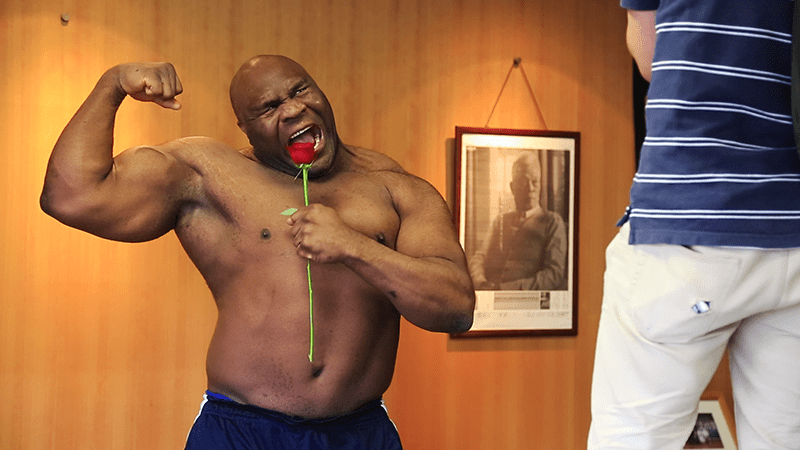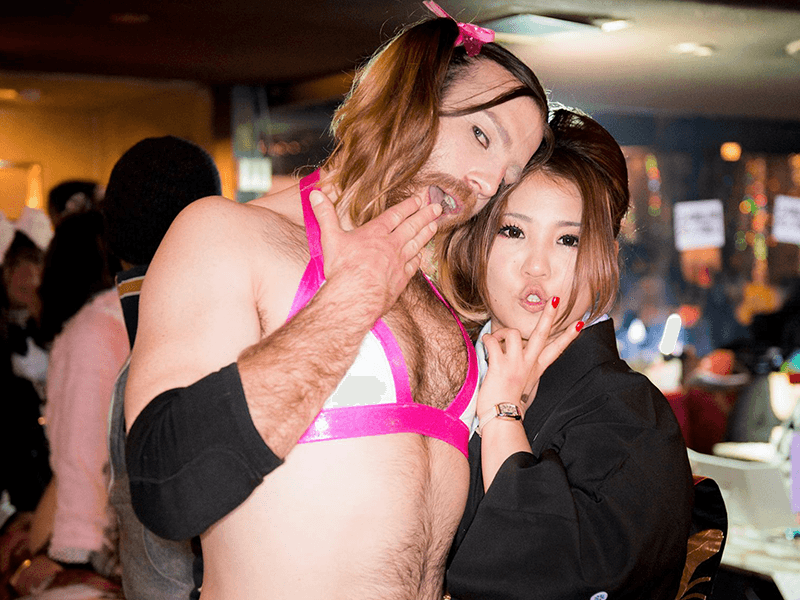One of the hallmarks of the foreign experience in Japan – at least for non-Asian foreigners – is the idea of becoming “big in Japan.” Images of foreigners are used everywhere to sell all kinds of products, partially with the idea that if a foreigner is associated with a product, then it really must be good. There’s also a hunger for novelty in what is, on the surface at least, a very homogenous society, and images of foreigners add a touch of the unusual that draws attention.
Meeting this demand is a steady stream of people from the US, the UK, Australia, and other countries who have either come with the intention of getting into the spotlight from the beginning, or falling into it after they arrive. And more and more often, they’re stepping away from media companies and doing it for themselves on social media. But what does it take to rise above the rest of those hopefuls and really make it to some level of stardom? If you have no real talent, aside from your foreignness, is it possible to become big in Japan?
That’s what a soon to be released documentary sets out to explore. Titled Big in Japan, the film follows the journey of a young Australian, David Elliot-Jones, as he sets out on a mission to become famous in Japan. Along the way, we meet with three foreign talento who are at various stages of becoming famous in Japan: Bob Sapp, an American former MMA fighter who maintains an almost endless stretch of promotional events, photo shoots, and commercials; Ladybeard, an Australian cross-dressing stuntman, wrestler, and heavy metal singer; and Kelsey Parnigoni, a young Canadian woman who’s looking to make it as a J-pop idol.
Big in Japan was put together by a trio of (quite talented, actually) Australian filmmakers: Lachlan McLeod directed the film, Louis Dai co-directed and edited, and David worked as a co-director, writer, presenter, and producer of the film. It was shot between 2013 and 2015. Over the course of the movie, David tries different approaches towards becoming famous, such as working as an actor and an extra on TV shows and commercials and creating a series of YouTube videos featuring an alter ego, Mister Jonesu.
At the same time, the film gradually sheds light on the darker side of the quest for fame, and digs into the motivation that drives people to pursue the limelight. We came away from the film impressed by the production, particularly given the small team that put it together, and amazed at David’s tenacity and willingness to go out in public as Onigiri Man, whose costume consisted of a giant rice ball helmet . . . and a red loincloth.
The film is set for a screening in Tokyo on December 3, and we had a chance to chat with David about the film, their relationship with some of their “stars,” and what it takes to become Big in Japan.
Did your team have much experience in filmmaking before you started this project?
Before Big in Japan, my team and I had made one project together – a documentary called Convenient Education (2012). It was commissioned by Australian broadcaster SBS and explored the plight of international students who moved to Australia with dreams of permanent residency.
How did you go about getting funding for the film?
The film was mostly self-funded, but we ran a crowdfunding campaign in April to help us finish the film and pay for post-production. An incredible 251 people supported us and we raised almost AU$29,000. We owe this film to those supporters!
How did you manage to get access to Bob Sapp the way that you did? He seems like a busy guy and I was impressed that you were able to get so much time with him.
We sent many, many, many Facebook messages to Bob Sapp until we eventually got a response! Once we had made the initial connection, it wasn’t hard for us to tag along despite his busy schedule.
Maybe it’s because I’ve seen Ladybeard on the cover of magazines before, but again, I was impressed by the fact that he opened up to you about his past the way that he did. What did you think about that?
We spent a long time with Rick [Richard Magarey] on and off camera and became quite good friends. The revelation about his past came about after almost a year of following his story and probably reflects the trust that we had with Rick. I think he also recognized that story as being a huge part of who he is today.
You put yourself in some pretty extreme situations as Mister Jonesu. How did you work up the courage to do some of the things that you did?
I mostly managed it by thinking of myself as having a role – the fame guinea pig. In this way, it didn’t feel as much like it was me with all the crazy antics, but a wacky fame-hungry character.
Learning what you did through the course of making the film, would you have done anything different from the start?
We probably wouldn’t have put so much effort into our YouTube videos! We spent hours and days drafting stories, getting scripts professionally translated and rehearsing scenes (bearing in mind I hadn’t acted before). It was a really labourous and expensive process and maybe we could have adopted a more lofi approach and achieved the same amount of views. Oh well!
Aside from learning about what it takes to become famous in Japan, what do you think you learned about Japan itself through this experience?
There are so many things, but I found the gambaru culture particularly interesting. People are very supportive of those who are giving it their all. So many people helped us behind the scenes during this project, and I think it was because we were trying so hard to make our documentary a reality and they respected our effort.
Do you have any other film projects in the works?
I can’t disclose exactly what we’re working on next, but it’s really exciting and completely different from Big in Japan. We’re planning to make another feature documentary.
What you do think it takes to be “Big in Japan”?
Stubborn persistence and zero ego.
You can see a preview of Big in Japan below:
For more details about the December 3 screening, visit our event listing, and for more information about Big in Japan, visit www.biginjapandoc.com













